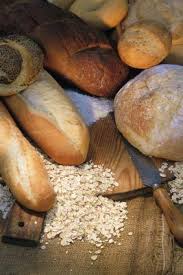Now non-food plants can help feed the world
Researchers have produced starch from plants not usually used for food purposes, potentially opening up whole new sources for foods and packaging materials.
The scientists, from US institute Virginia Tech, have developed a novel process involving cascading enzymes to transform cellulose into amylose starch. The substance is not broken down during the digestive process, acts as a good source of dietary fibre and studies have shown it can reduce the risk of obesity and diabetes.
Starch is one of the most important components of the human diet and provides 20-40% of a person’s daily caloric intake. As a consequence Virginia Tech said the scientific breakthrough could help increase food supply as the world’s population is expected to climb to nine billion by 2050.
“Cellulose and starch have the same chemical formula,” said Y.H. Percival Zhang, an associate professor of biological systems engineering in the College of Agriculture and Life Sciences and the College of Engineering, and lead researcher on the project.
Enzyme cascade
“The difference is in their chemical linkages. Our idea is to use an enzyme cascade to break up the bonds in cellulose, enabling their reconfiguration as starch.”
The new approach takes cellulose from non-food plant material, such as corn stover, converts about 30% tamylose, and hydrolyzes the remainder to glucose suitable for ethanol production. Corn stover consists of the stem, leaves, and husk of the corn plant remaining after ears of corn are harvested. However, the process works with cellulose from any plant.
This bioprocess, called ‘simultaneous enzymatic biotransformation and microbial fermentation’ is easy to scale up for commercial production, the study states.
Environmentally friendly
In addition, it is environmentally friendly because it does not require expensive equipment, heat, or chemical reagents, and does not generate any waste. The key enzymes immobilized on the magnetic nanoparticles can easily be recycled using a magnetic force.
Y.H. Percival Zhang, an associate professor of biological systems engineering in the College of Agriculture and Life Sciences and the College of Engineering, was lead researcher on the project. He said amylose starch had other uses in the food chain too.
“Besides serving as a food source, the starch can be used in the manufacture of edible, clear films for biodegradable food packaging. It can even serve as a high-density hydrogen storage carrier that could solve problems related to hydrogen storage and distribution.”


































